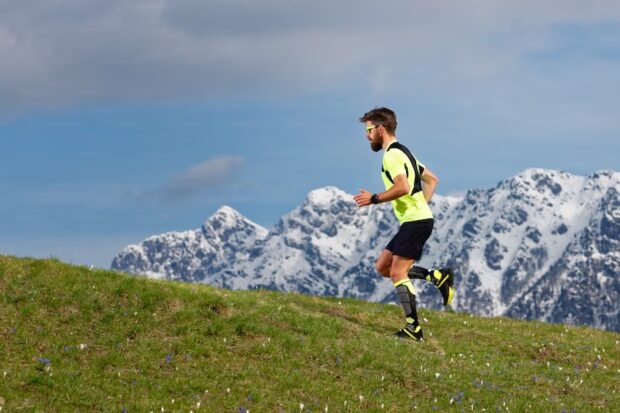A Look at Skyrunning: A Journey into the Wild and Unforgiving Terrain
Skyrunning, a sport created by Italian Marino Giacometti in 1992, defies conventional running and mountain racing. It challenges athletes in nature’s harshest domains, with races ascending altitudes over 2,000 meters (6,562 feet). This extreme fusion of endurance, mental fortitude and natural beauty has grown significantly since its inception, captivating runners worldwide.

The Thrilling World of Skyrunning Competitions
The world of skyrunning competitions unfolds on nature’s towering stages, where athletes test their limits against the backdrop of majestic peaks. These races aren’t for the faint-hearted; they require participants to ascend steep mountain trails, traverse rocky precipices and navigate challenging technical terrain at dizzying altitudes.
The thrill lies in conquering distance and elevation as runners ascend to altitudes where the air thins and the elements become fierce adversaries. Iconic sky running events like the Tromsø Skyrace and the Hardrock Hundred Endurance Run are renowned for their breathtaking yet brutal courses. These races push the boundaries of human endurance, proving grounds for the world’s most daring skyrunners.
Skyrunning Equipment and Gear
Skyrunning is no ordinary run; it’s a high-altitude adventure that demands specialized gear. Every piece of equipment is carefully chosen to ensure safety and performance in rugged, often treacherous terrain. Lightweight yet sturdy trail running shoes, equipped with aggressive treads for optimal grip on rocky surfaces, are necessary.
Runners also rely on hydration vests to stay fueled during grueling ascents and trekking poles provide support during steep climbs and descents. Clothing should be versatile and capable of adapting to rapidly changing mountain weather. Safety is paramount, particularly in races featuring exposed ridges or technical sections, requiring runners to wear helmets and harnesses.
Challenges and Risks in Skyrunning
Skyrunning is an intense physical and mental challenge and its high-altitude component introduces a unique set of risks and difficulties. Athletes must contend with the physiological strains of running at altitude, including the risk of altitude sickness. Exposure to rapidly changing mountain weather, dehydration and hypothermia are real concerns.
Runners must be self-sufficient and well-prepared, carrying essentials like nutrition, hydration and protective clothing. Navigating remote and often isolated areas poses additional challenges. Safety measures, like detailed course information and strict equipment requirements, are vital for minimizing risks and safeguarding runners.
Skyrunning Legends and Iconic Races
The world of skyrunning is steeped in legends and iconic races that have left indelible marks on the sport’s history. Athletes like Kilian Jornet, Emelie Forsberg and Marco De Gasperi have become synonymous with excellence in this sport. Races such as the Zegama-Aizkorri Marathon, Ultra-Trail du Mont-Blanc, the Rut Mountain Runs in Montana and the Glen Coe Skyline in Scotland have achieved legendary status within the community.
These events, characterized by their breathtaking yet grueling courses, push participants to their limits and provide a chance to experience some of the world’s most awe-inspiring mountain landscapes. Skyrunning legends and classic races unite the runners in conquering nature’s grand challenges.
Conclusion
Conclusively, skyrunning is an extreme sport that offers a unique and thrilling experience for athletes who are willing to push their limits. From racing on high peaks to navigating rugged terrain, the sport requires a combination of physical strength, mental toughness and a love for the great outdoors.
With the right equipment and gear, skyrunners can conquer nature’s extremes and celebrate the pioneers and classics of this incredible sport.
